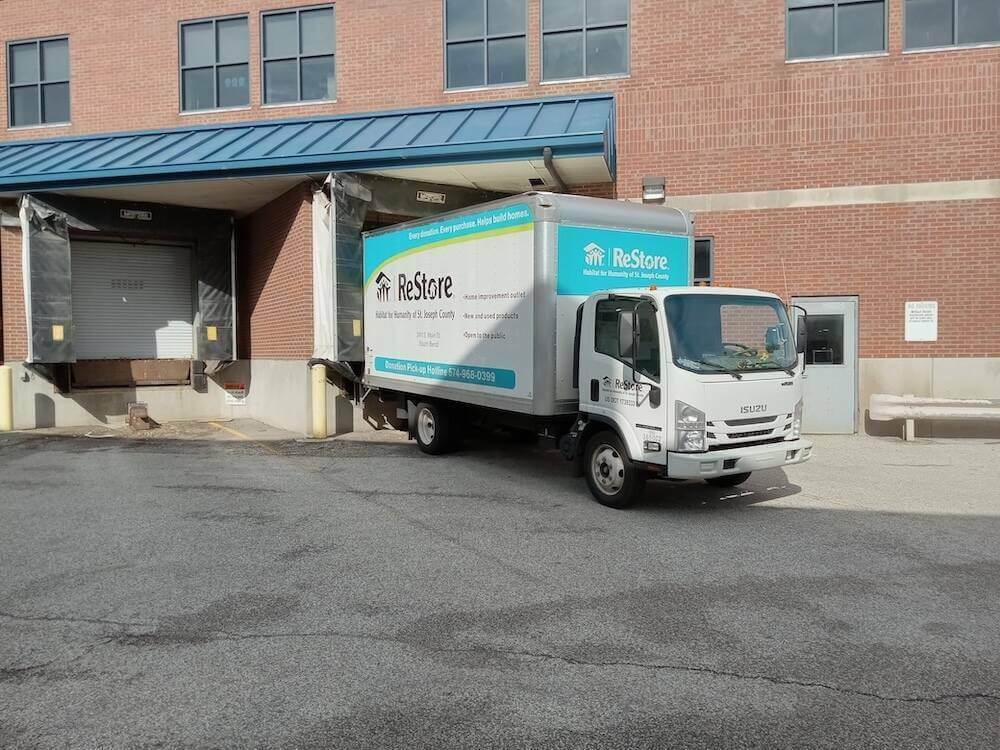
Summertime for Notre Dame’s campus does not slow down operations: when students are away, staff are busy preparing for the next academic year and making progress on construction projects. Since Notre Dame acquired the former South Bend Tribune Building, and the Psychological Services Center moved out of its former Hill Street location, the process of removing old furnishings and renovations has begun to prepare the spaces for future occupants.
It is typical for large renovation projects like these to accumulate waste. But Notre Dame’s commitment to diverting waste from the landfill reaches far beyond the campus’ recycling expansion program. Many behind-the-scenes programs exist, working with both internal and external partners to ensure we are better stewards of our resources while supporting the surrounding community. One of Notre Dame’s close partners in this effort for repurposing office furnishings and fixtures is the Habitat for Humanity ReStore—a home improvement store that sells donated new and gently used furniture, appliances, home goods, and building materials. The benefits of Habitat ReStore are two-fold, by creating accessibility to materials through affordable pricing and funding Habitat for Humanity homes through the ReStore sales. “Sustainability is about more than just diverting waste from the landfill and reducing greenhouse gas emissions. A key pillar of this work considers access and equity, and meeting the needs of all humans,” says Geory Kurtzhals, Senior Director of Sustainability. “We appreciate the partnership with Habitat for Humanity ReStore, as their work highlights all three sustainability pillars, which include social, economic, and environmental aspects.”
Habitat ReStore was called in to rescue many of the materials left behind. Nearly anything that could be found inside the buildings was recovered, from traditional furnishings like couches, desks, waste bins, and lamps to functional finishes like stair hand railings, baby changing stations, outlet covers, and exit signs. Cumulatively, over 25 tons of materials were obtained to give retired products new life and generate financing for affordable housing. In the former Clinical Studies Building, 15,140 pounds of materials were recovered, and the Tribune Building weighed in at a total of 36,660 pounds of rescued materials. "Landfill diversion helps create a circular economy where perfectly good products and materials are reused and recycled, which reduces waste and provides cost savings for ReStore shoppers,” says Jim Williams, President and CEO of Habitat for Humanity of St. Joseph County. “We applaud the University's efforts to be good stewards of their resources and hope more businesses will include us in their sustainability plans."
To learn more about how Notre Dame diverts waste from the landfill, visit our waste diversion page.